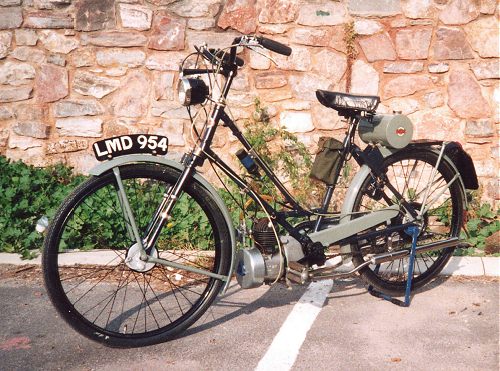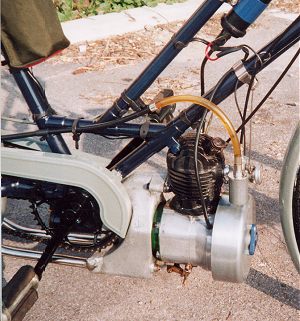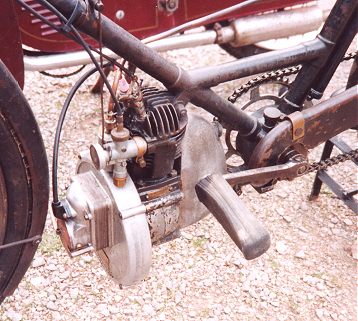 Go
to the Archive index
Go
to the Archive index
Here is a photograph of my 1940 Scott Cyc-Auto, now just having completed its third rebuild in 43 years. I am LMD's third owner. Starting off during World War II as transport for the West Dartmoor District Nurse it passed, after its service career, to a long-term family friend who used it during the Austerity Years on and around his farm at Lamerton near Tavistock. But the Devon lanes were too steep and he was too heavy and the machine was consigned to an outhouse for more than a decade, where I came across it in 1959. It was my first ever road going machine and with fuel pinched from the mower I pushed doggedly up and down the garden path to no effect. Like most other enthusiasts I will never forget the thrill when, on the point of giving up, the engine suddenly spluttered into life, the bike surged forward, I leapt aboard, wobbled across the lawn and piled victoriously into the hedge.
As an L-plated and very young student in 1960, I skittered brakeless yet somehow protected around the streets of London. I then used it sporadically until 1966 when the first proper rebuild was undertaken. A second followed in 1972 - by which time I was well into cars - and its last run was to the Clyst St Mary Traction Engine rally that same year. From then until the late '90s the bike lay dormant until I became aware of the growing interest in lightweights and cyclemotors and was slyly sent a copy of Buzzing - whereupon everything changed! Nagged,prompted and encouraged by The Devon Autocyclists and some helpful info from Mike English I dug LMD out again.
Early last year the rebuild began in earnest. I don't know why but I have always found the Cyc-Auto a particularly fiddlesome and difficult machine to work on despite its small size. It's not the same as working on the worn but robust C10 BSA. Somehow its minimalist construction and idiosyncratic design make the Cyc-Auto quite vulnerable and it was necessary to proceed carefully as things could easily be broken. The hard early years had certainly taken their toll and there was a lot of wear. Significantly, the engine was fairly sound; the main bearings were good and Alpha big and small ends and a replacement piston (the local factor found one for a Rex that fitted) did the rest. The cast soft alloy flywheel damages very easily and I decided not to attempt to replace the failed magnets - converting instead to 6V battery and coil ignition using Graham Pike's excellent diagram and instructions from Buzzing (Dec 2000). The brakes and hand controls, which are not well made, needed a lot of care to get them working adequately. The cycle parts, largely ex-carrier cycle 1966, refurbished nicely. But the wheels needed the careful attention of the, luckily enthusiastic and helpful, local bicycle man. Boot sales, Buzzing and autojumbles provided tyres and an assortment of lighting parts; enough of which were saveable to construct a system of two pre-war Lucas dynamos and some nice looking lamps - even if they don't always light.
Laboriously painted and plated, LMD crept to my delight through the MoT. True love never runs smooth however; too late for Buzzing to Bickleigh, I tried a night run to the local noggin and natter instead. Only to be plunged into darkness three miles along as all the bulbs blew, followed shortly by the 50p autojumble coil failing as well - necessitating a laborious and embarrassing slow pedal home. But That's All Part Of The Fun. New bulbs and (a currently borrowed from the BSA) coil are now fitted and we're ready to go again.


Robin's Scott engine compared with Keith Lamprey's Wallington Butt
designed
engine of 1936, seen at Bickleigh last
September
First published, April 2004